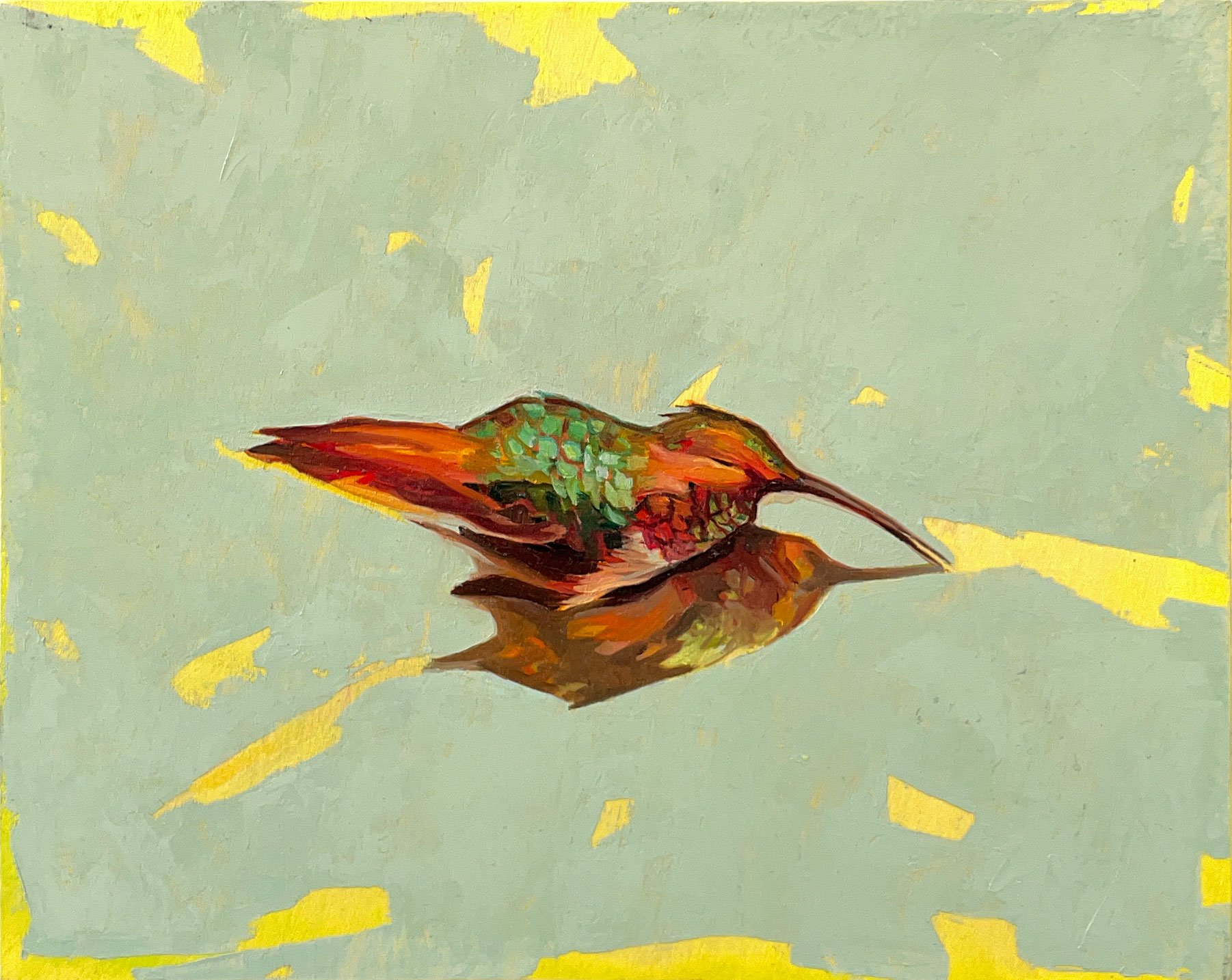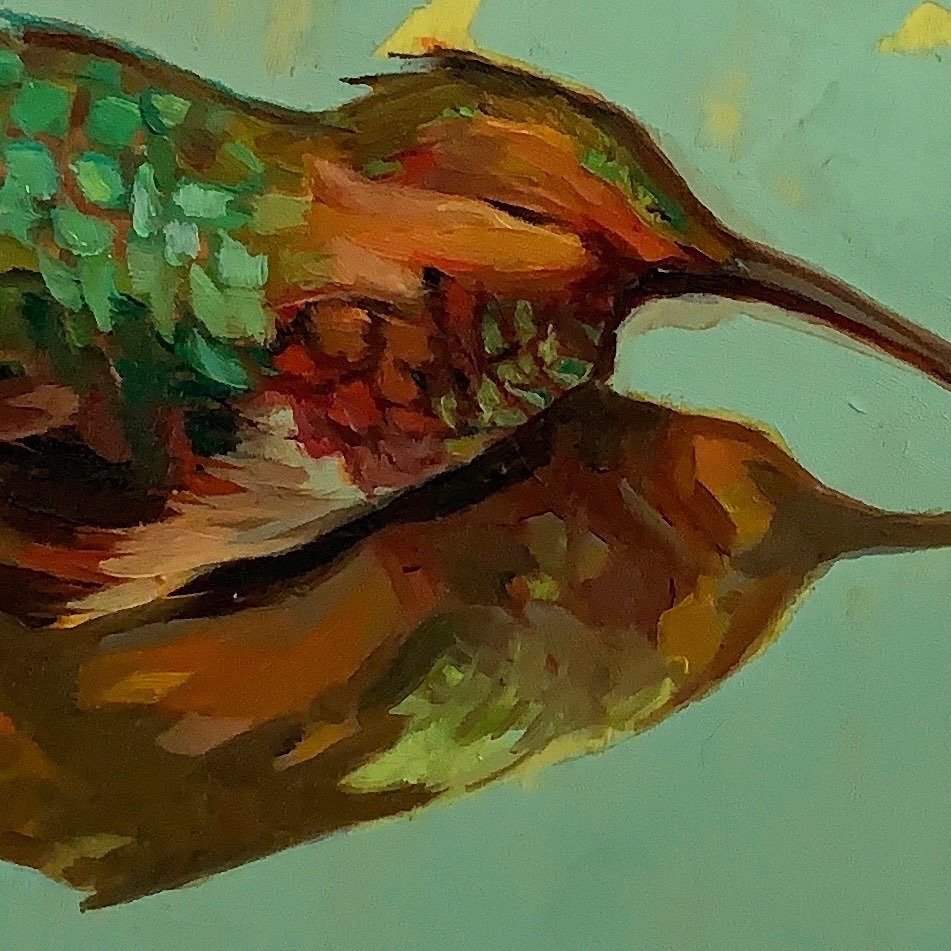Hummingbird, orange on turquoise
8 x 10 inches
oil on wood
2021
While painting with such a bright color palette, I did some research on the hummingbirds’ vision. I need to share some insights. What do a hummingbird and a mantis shrimp have in common? They can see colors that are invisible to the human eye (like ultraviolet). Which is a little puzzling to me. I get that flowers really want the hummingbirds’ full attention to getting pollinated. So, it makes sense to me Hummingbirds need more photoreceptors than humans. (We have three types of cones—special cells sensitive to red, blue, or green light - and the hummingbird has four).
But now listen to this; the mantis shrimp has anywhere from 12 to 16 different kinds of cone cells! And he is not even pollinating anything.
What on earth does he need 12 cones for, down there in the ocean hiding away in burrows?
I am just glad God didn’t give us those 16 cones. I guess we’d all go nuts- or we’d be hiding in wholes like that shrimp does and start punching one another (yes, the mantis shrimp packs the most powerful punch in the animal kingdom). By the way: Thank you, Naomi Pitcairn, for your outstandingly beautiful photos of hummingbirds. I hope you like this painted version.
#allenshummingbird #hummingbirdpainting
8 x 10 inches
oil on wood
2021
While painting with such a bright color palette, I did some research on the hummingbirds’ vision. I need to share some insights. What do a hummingbird and a mantis shrimp have in common? They can see colors that are invisible to the human eye (like ultraviolet). Which is a little puzzling to me. I get that flowers really want the hummingbirds’ full attention to getting pollinated. So, it makes sense to me Hummingbirds need more photoreceptors than humans. (We have three types of cones—special cells sensitive to red, blue, or green light - and the hummingbird has four).
But now listen to this; the mantis shrimp has anywhere from 12 to 16 different kinds of cone cells! And he is not even pollinating anything.
What on earth does he need 12 cones for, down there in the ocean hiding away in burrows?
I am just glad God didn’t give us those 16 cones. I guess we’d all go nuts- or we’d be hiding in wholes like that shrimp does and start punching one another (yes, the mantis shrimp packs the most powerful punch in the animal kingdom). By the way: Thank you, Naomi Pitcairn, for your outstandingly beautiful photos of hummingbirds. I hope you like this painted version.
#allenshummingbird #hummingbirdpainting
8 x 10 inches
oil on wood
2021
While painting with such a bright color palette, I did some research on the hummingbirds’ vision. I need to share some insights. What do a hummingbird and a mantis shrimp have in common? They can see colors that are invisible to the human eye (like ultraviolet). Which is a little puzzling to me. I get that flowers really want the hummingbirds’ full attention to getting pollinated. So, it makes sense to me Hummingbirds need more photoreceptors than humans. (We have three types of cones—special cells sensitive to red, blue, or green light - and the hummingbird has four).
But now listen to this; the mantis shrimp has anywhere from 12 to 16 different kinds of cone cells! And he is not even pollinating anything.
What on earth does he need 12 cones for, down there in the ocean hiding away in burrows?
I am just glad God didn’t give us those 16 cones. I guess we’d all go nuts- or we’d be hiding in wholes like that shrimp does and start punching one another (yes, the mantis shrimp packs the most powerful punch in the animal kingdom). By the way: Thank you, Naomi Pitcairn, for your outstandingly beautiful photos of hummingbirds. I hope you like this painted version.
#allenshummingbird #hummingbirdpainting



